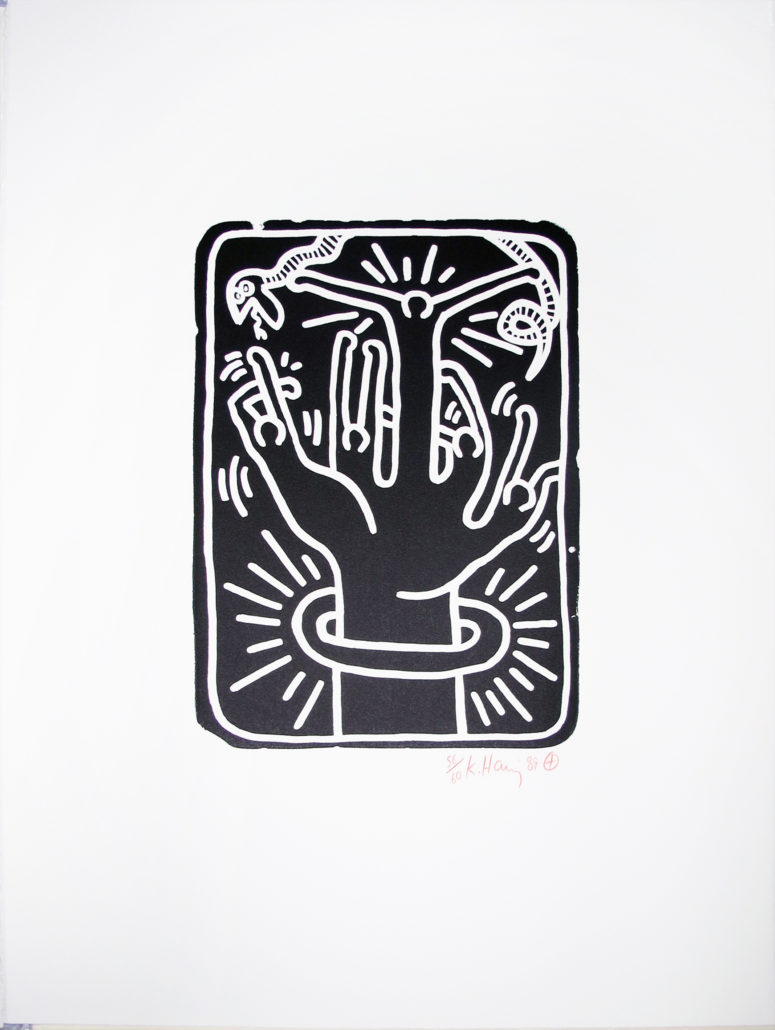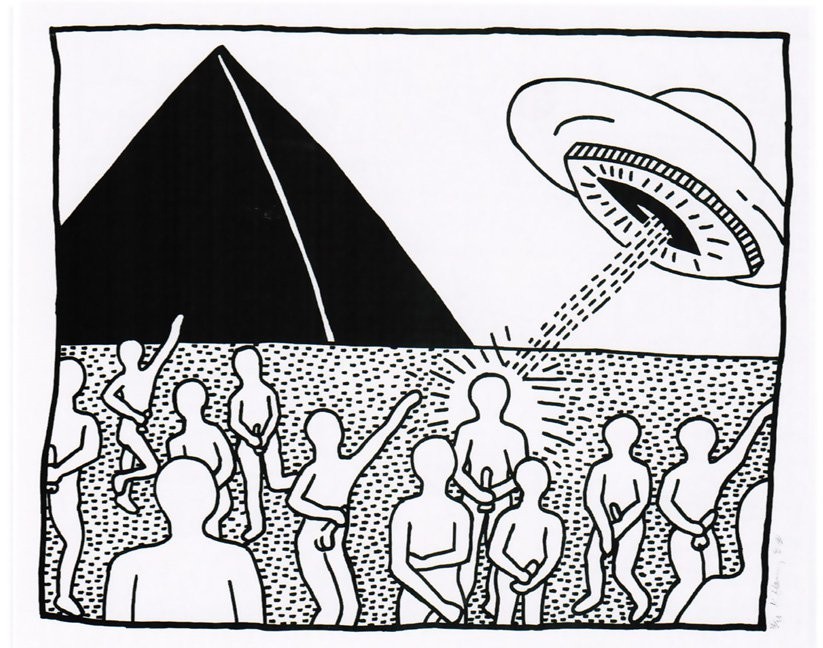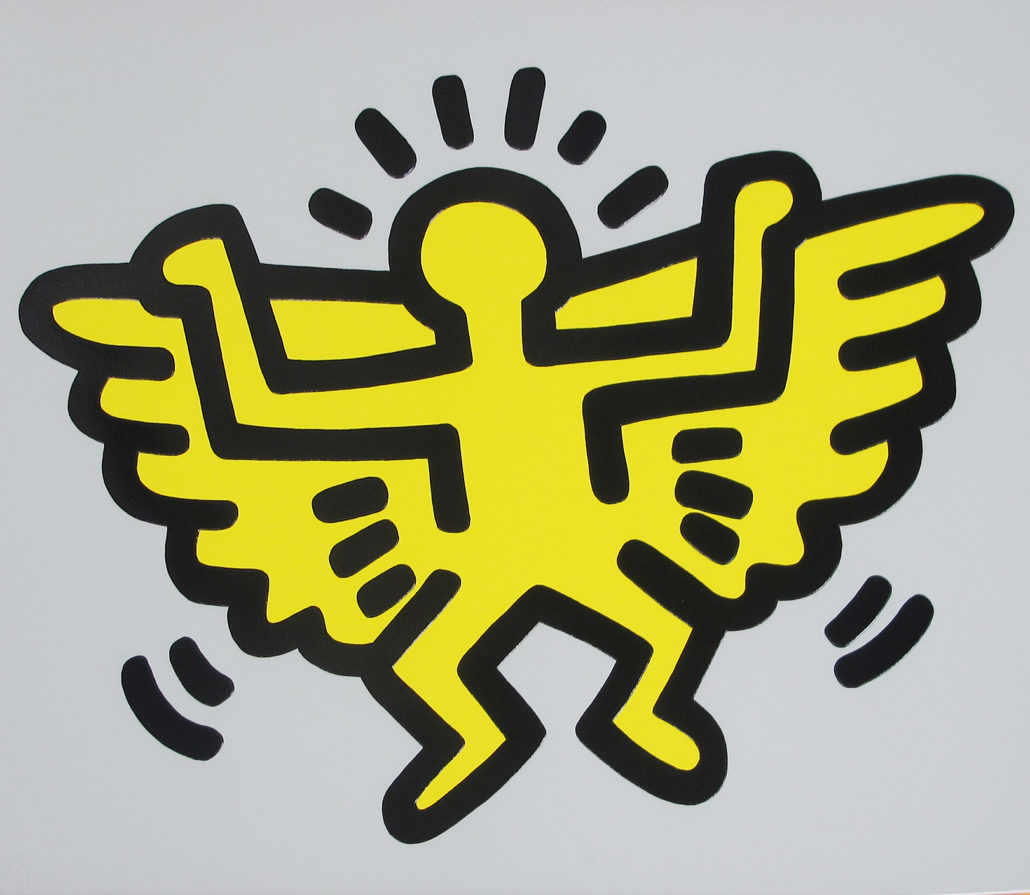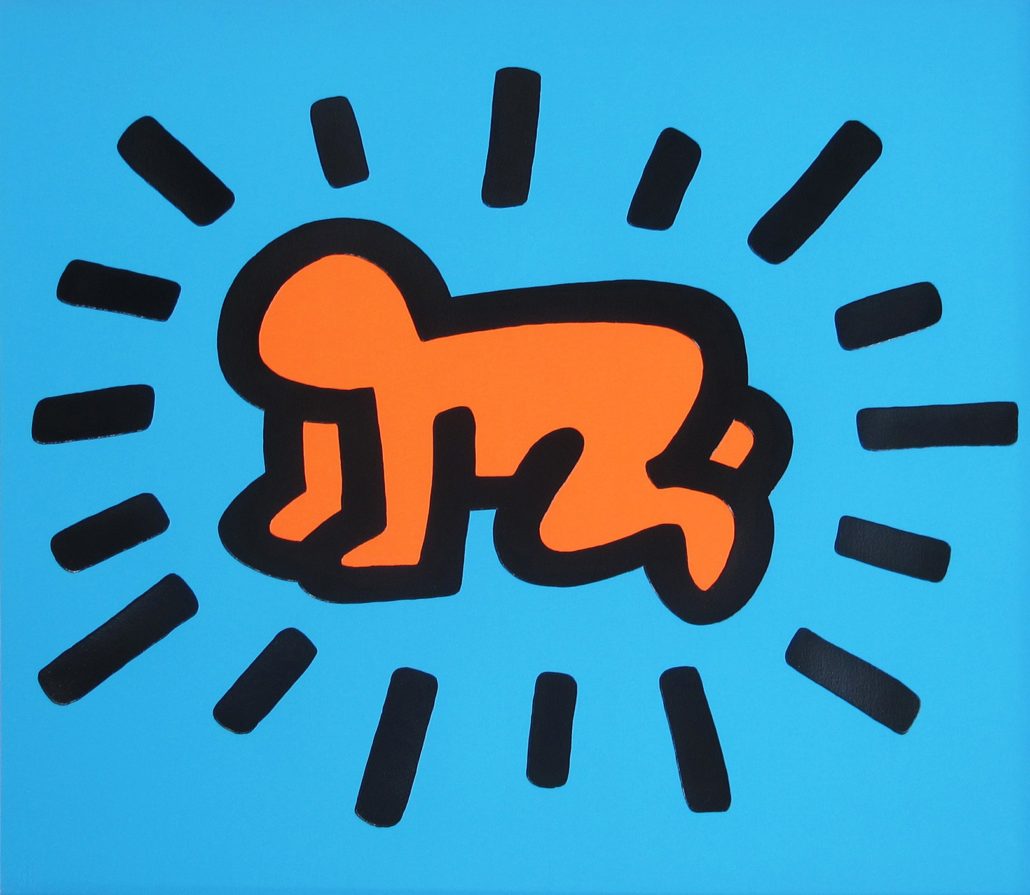Keith Haring’s Street Art: Subway Drawings, Murals & Graffiti
The Role of Street Art in Haring’s Ouevre
Haring’s street art was the foundation of his life’s work in terms of artistic style. But it also functioned to exemplify one of his core beliefs about art’s purpose in general and, more particularly, the role of the fine art market in society.
“My philosophy was always that art really could communicate to larger numbers of people, instead of the elitist group of people that could afford it and “understand” it…For me the art market has very little to do with what art is supposed to be.” – Keith Haring
Haring’s street art was egalitarian. Even when he skyrocketed to international fame, he continued creating works across public spaces. That included billboards, cars, building-sized murals, children’s hospitals, and more.
Foundations of Keith Haring’s Street Art
Three main influences helped developed Haring’s street art style, so let’s take a look at how these staples of the zeitgeist in the 70s and 80s formed him.
1. Advertising
Like many children growing up in the 60s and 70s, Haring had early and consistent exposure to advertising, especially through television. This widespread shift to the use of simple images and text to communicate influential messages certainly made an impact on Haring’s formative years.
2. Cartoon Animation
Haring’s father was an amateur cartoonist. He also encouraged Keith’s early childhood dream of drawing for Disney.
It’s quite clear that the stylization of cartoon and comic strips influenced Haring’s style throughout his life. For example, check out this piece which Haring created in the final year of his life.
Modern graffiti culture had its earliest beginning in the early 60s in Philadelphia, Pennsylvania. Coincidentally, this was also Haring’s birth state. Graffiti cultured migrated to NYC, as Haring himself would later do.
By the time Keith Haring arrived to the city in 1978, graffiti had flourished. In most cases, it wasn’t artistic in the sense that much modern street is. Rather, it was often “tagging”, or writing one’s name in a way that prioritized flow and style over legibility.
In many cases, it began as a way of marking territories, especially for gangs. Perhaps the most common place to find graffiti in the early days was in subway stations and on subway cars. It was a prime location, allowing for maximum visibility but also quick getaways.
By the time Haring moved to New York, it was common for entire subway car windows to be covered in spray paint. You can almost see a cartoonish, Haring-style lightbulb blink on over his head the first time he stepped into the NYC subway.
3. Graffiti Culture
Modern graffiti culture had its earliest beginning in the early 60s in Philadelphia, Pennsylvania. Coincidentally, this was also Haring’s birth state. Graffiti cultured migrated to NYC, as Haring himself would later do.
By the time Keith Haring arrived to the city in 1978, graffiti had flourished. In most cases, it wasn’t artistic in the sense that much modern street is. Rather, it was often “tagging”, or writing one’s name in a way that prioritized flow and style over legibility.
In many cases, it began as a way of marking territories, especially for gangs. Perhaps the most common place to find graffiti in the early days was in subway stations and on subway cars. It was a prime location, allowing for maximum visibility but also quick getaways.
By the time Haring moved to New York, it was common for entire subway car windows to be covered in spray paint. You can almost see a cartoonish, Haring-style lightbulb blink on over his head the first time he stepped into the NYC subway.
Timelessness of Haring Street Art
The earliest examples of human art follow the same basic approach of advertising, animation, and, perhaps to an even higher degree, graffiti. Simple images with impactful messages.
It’s a deep red handprint pressed against a cave wall, flickering in firelight. It’s a simple glyph carved into a sun-drenched rock face. It’s the ancient expression of “I was here,” and the mythic cry of “Let this be seen, known, internalized.”
So much of Keith Haring’s street art follows this archaic path of human expression. But it also reflects one of his core beliefs. He famously said, “Children know something that most people have forgotten.”
Another Haring quote expands on that statement:
“Children are the bearers of life in its simplest and most joyous form. Children are color-blind and still free of all the complications, greed, and hatred that will slowly be instilled in them through life.” – Keith Haring
One of Haring’s most famous works, “Radiant Baby” is probably the most pointed expression of this core belief.
Examples of Keith Haring’s Street Art
About 5000 subway drawings in five years, most of which did not survive. Indeed, street art is fleeting by nature. The vast majority of Haring’s street art was no exception.
However, you have to respect an artist who creates from the pure urge of expression. His graffiti beginnings demonstrate that it was never important to him whether his work would be preserved in museums. He simply had to create to breath.
The below quote about his struggle with AIDS exemplifies how he held to this principal even toward the end of his life.
“I am quite aware of the chance that I have or will have AIDS. The odds are very great and, in fact, the symptoms already exist. My friends are dropping like flies and I know in my heart that it is only divine intervention that has kept me alive this long. I don’t know if I have five months or five years, but I know my days are numbered. This is why my activities and projects are so important now. To do as much as possible as quickly as possible. I’m sure that what will live on after I die is important enough to make sacrifices of my personal luxury and leisure time. Work is all I have and art is more important than life.” – Keith Haring
Make no mistake, Keith’s technical abilities and draftsmanship were superb. He chose to be prolific with his simple forms out of the belief in their intrinsic power and the idea that doing one thing really well was better than experimenting with a huge array of styles.
Beyond Haring’s subway drawings, his street art also included many murals. His most famous include the Houston Bowery Wall, the Berlin Wall mural, and the “Crack is Wack” mural.
If you’d like to go deeper into Keith Haring’s street art, check out the PBS documentary “Keith Haring: Street Art Boy”. It’s available on Prime Video and Apple TV+.
Inquire About Keith Haring Artwork
Hamilton Selway is proud to offer a wide selection of Keith Haring works. Search through our Keith Haring archives and use the contact form to inquire about a particular piece.







